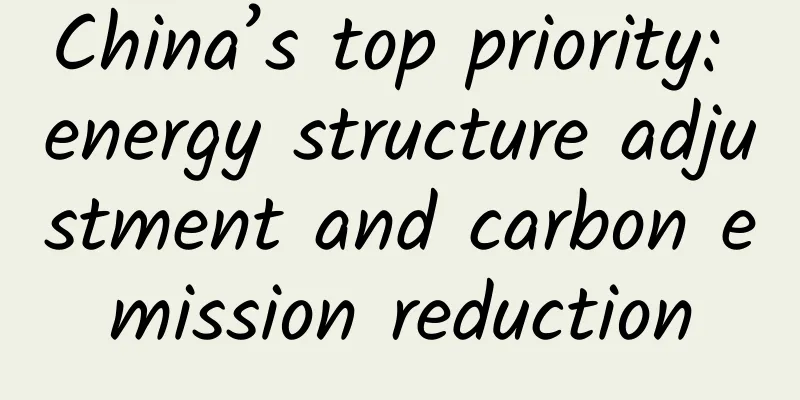China’s top priority: energy structure adjustment and carbon emission reduction

|
In August , at least 10 provinces in China cut power and temporarily shut down factories, especially energy-intensive ones, to mitigate the impact of soaring coal prices and achieve the government's carbon emission targets for 2021. These examples show the Chinese government's determination to achieve its carbon emission peak target. On October 24, 2021 , China's State Council announced China's new climate plan to peak carbon dioxide (CO2) emissions before 2030. According to the plan, the proportion of non-fossil energy consumption will reach about 25% before 2030 , and carbon dioxide emissions per unit of GDP will drop by more than 65% compared with 2005 levels . The plan proposes major goals and key guidelines for achieving carbon peak before 2030 , including promoting green and low-carbon transportation, advancing the circular economy, and supporting technological innovation. In this article, Omdia analyses the long-term impact of this new climate plan on China’s manufacturing sector. Figure 1 : China’s five strategies to achieve its climate plan by 2023 Source: State Council of the People's Republic of China, Omdia Energy structure: the key to China’s decarbonization China's new climate plan sets the goal of green and low-carbon energy transformation. These measures will be a double-edged sword for China's machinery and automation market as it will affect demand for both renewable and non-renewable power generation industries.
These plans and measures will directly drive the growth of machinery and automation products in related industries. For example, low-voltage motors and drives have always been one of the key automation equipment for driving and improving energy efficiency. Omdia expects that the growth of low-voltage motors and drives in China's renewable energy power generation industry will exceed that of non-renewable energy industries throughout the forecast period. Figure 2 : Unit shipment growth of low voltage motors and drives in China’s power generation industry Source: Low Voltage Drives Report – 2021 ; Low Voltage Motors Report – 2021, Omdia Carbon reduction in energy-intensive industries Metal processing industries such as steel and non-ferrous metals, building materials industries such as cement, glass and ceramics, and industries such as petrochemicals have been listed as key industrial sectors in the climate plan action guide. Similar to the coal industry, the steel industry is one of China's largest polluters, generating about 15% of China's carbon emissions. China has implemented a series of production restrictions and banned unplanned new projects to reduce carbon emissions. Policy changes have also forced steelmakers to consider reducing emissions from existing steel mills, such as replacing existing blast furnaces with electric furnaces with relatively low carbon footprints. Omdia believes that these shifts will promote the adoption of more energy-efficient machinery and automation equipment in these industries. On the other hand, actively guiding these industries to use renewable energy, natural gas and other energy sources instead of coal will also accelerate the growth of equipment transformation needs in these industries to adapt to energy transformation. In addition, digital transformation will become one of the key factors in optimizing the efficiency of these industry systems. These growing digital needs will provide opportunities for related automation products, such as industrial network infrastructure equipment, machine vision, sensors, etc. Figure 3 : Forecast of sales growth of automation equipment in the following industries ─ China Source: Omdia Focus shift: from cost-oriented to energy-efficiency-oriented automation products As mentioned earlier, China’s new climate plan is expected to lead to a shift in end-user demand for industrial automation products. In the past, a cost-sensitive market where price was the primary factor influencing purchasing decisions, Chinese end-users are shifting their focus to products with higher efficiency standards. Electric motor-driven equipment such as fans, pumps, compressors, transformers, heat exchangers, and industrial boilers account for the majority of energy consumption in the industrial sector. According to the International Energy Agency ( IEA ), China’s electricity consumption from electric motors has grown from 1,400 TWh in 2006 to approximately 3,000 TWh in 2020 , accounting for 60% of the country’s total electricity consumption . More than 70% of the total electricity consumption from electric motors is attributed to inefficient large and medium-sized induction motor systems. The aggressive targets outlined in the policy are expected to accelerate the phase-out of obsolete, high-energy-consuming products, thereby creating market opportunities for products with higher energy efficiency standards. Omdia believes that China may pass legislation in the future to promote and guide the performance improvement of products in the above fields. For example, the low-voltage motor legislation in the legislation of mainland China will take effect in June 2021 , requiring motor manufacturers to meet the IE3 minimum energy efficiency standards for single-phase and three-phase asynchronous motors. From July 2023 , the new regulations will require motors between 75kW and 200kW to meet China's IE4 minimum efficiency level. Such legislation will create market opportunities for other equipment markets, especially when all IE4 synchronous motors sold are eventually connected to drives, which will benefit drive suppliers. During this period, suppliers who are at the forefront of technology, continue to innovate, and provide higher efficiency products will gain an advantage in the Chinese industrial automation equipment and mechanical equipment market. Figure 4 : China's machinery production and automation equipment market growth forecast Source: Omdia In summary, China's new climate plan reflects the Chinese government's determination and action to put the medium- and long-term goal of carbon peak first. In the short term, in order to achieve the carbon peak target, the production and investment of high-energy-consuming industries will be negatively affected to a certain extent due to restrictions on new projects and short-term production restrictions. However, in the long term, Omdia expects strong market penetration of more energy-efficient machinery and automation products, particularly driven by demand from renewable energy generation and energy-intensive process industries. Omdia believes that sustainable development remains the focus of China's industrial market and product prices will no longer be an obstacle to end-user market decisions. |
Recommend
Witness history! Here are all the configuration changes of China's space station so far →
Editing and drawing: Wu Futong Source: WeChat pub...
WeChat Pay Family Card function upgrade: Added "Other relatives" option with a maximum limit of 3,000
Recently, Tencent Customer Service's official...
Disassembling 9 human marketing skills and cases
Today I continue to share 9 human marketing cases...
China Energy Media Research Institute: Energy price trend analysis report in April 2022
Core Tips 1. International crude oil market In Ap...
The Dragon Boat Festival is here again, and this is how brands leverage their marketing efforts!
Let me ask you a serious question first: Have you...
This inconspicuous little creature may be a "great contributor" to food production
Earthworms, also known as earthworms, are terrest...
Beijing will carry out large-scale air disinfection? Don't be ridiculous, let's take a look at the "real disinfection" strategy
Recently, rumors about large-scale air disinfecti...
How to predict user churn rate and make strategies in advance?
The user churn rate directly reflects the market ...
Tik Tok advertising, the complete process of information flow promotion, targeting precise users!
For a complete Douyin advertising campaign, the i...
At the age of 30, BYD will draw 60 new cars to thank the car owners
1994-2024, thirty years of excitement, BYD will u...
I ate 160 bags of chicken breast in one month and my kidneys couldn't take it anymore!
Audit expert: Shen Yingjian Director of the Nutri...
Does it take 15 days for the test result to turn negative to produce antibodies? Experts respond!
It is said online that it takes 15 days for antib...
How to use the media to create internet celebrity products?
Every company wants to build its own internet cel...
Huang Zhuo of Gizwits: The Internet of Things must be decentralized
If the development of the smart hardware market i...
Wuwei Academy main line capture dragon first issue
Introduction to the first phase of Wuwei Academy&...








![[Live] Technology or management, how should programmers plan their career path?](/upload/images/67ebd64600305.webp)
